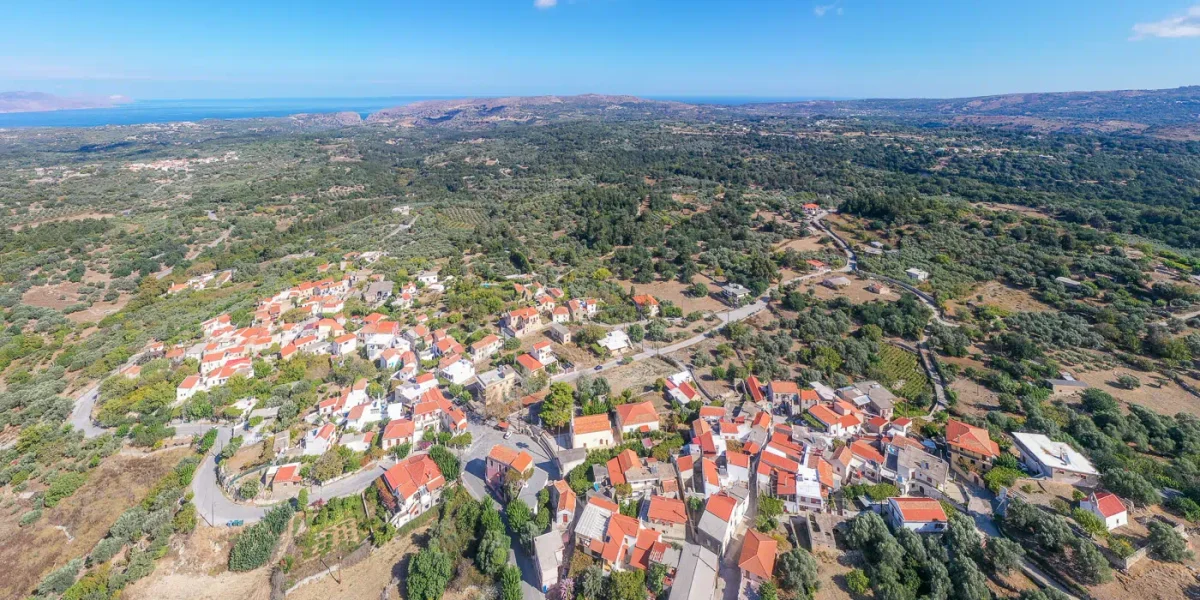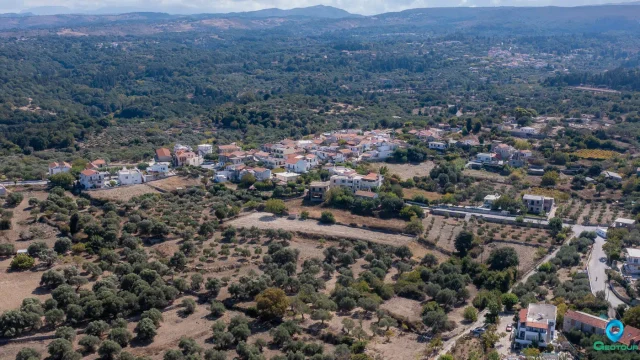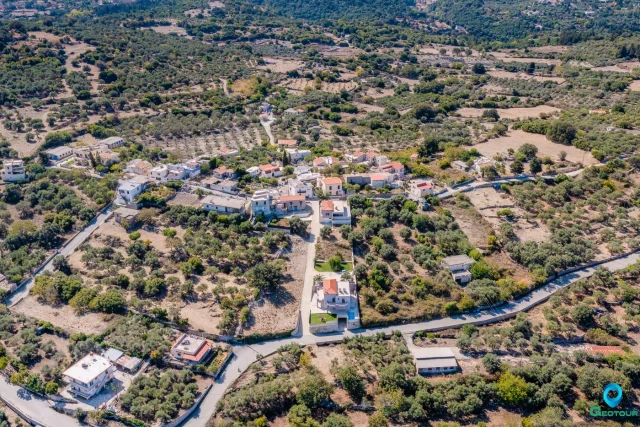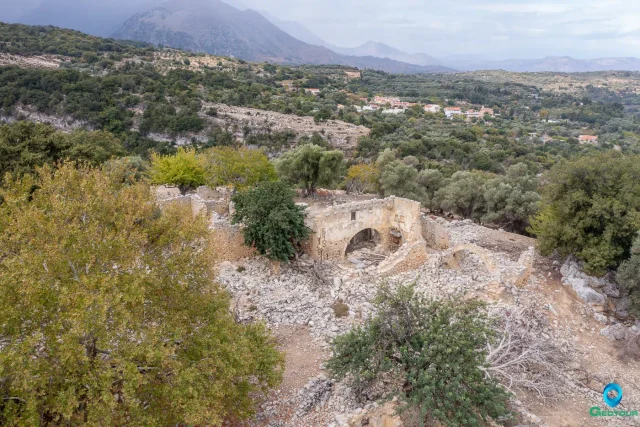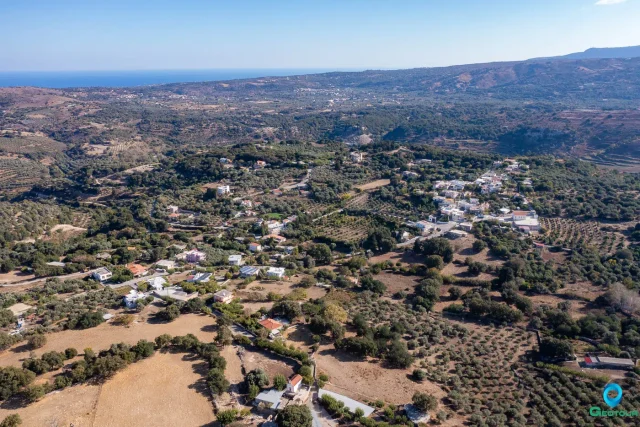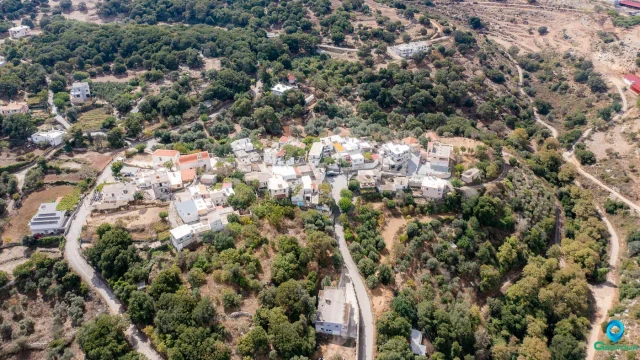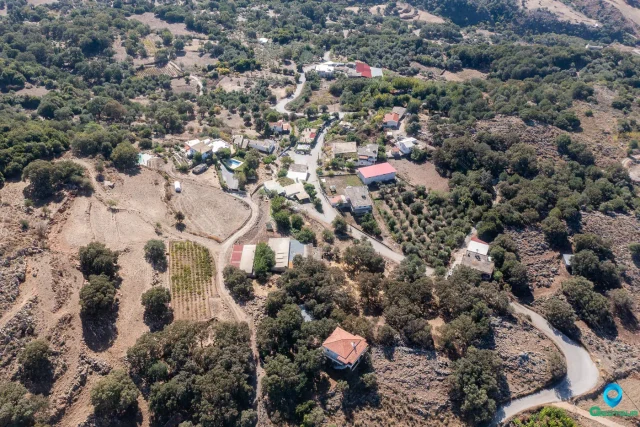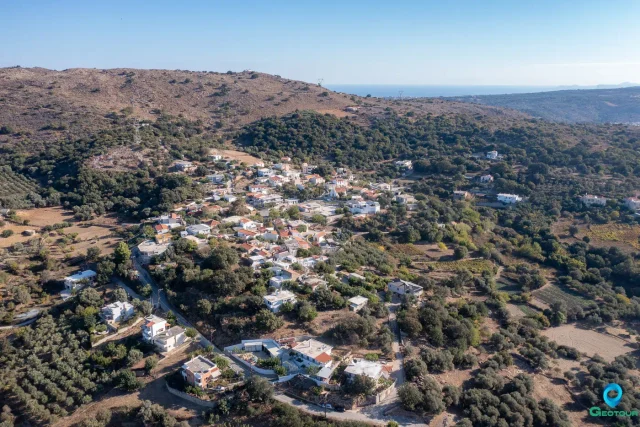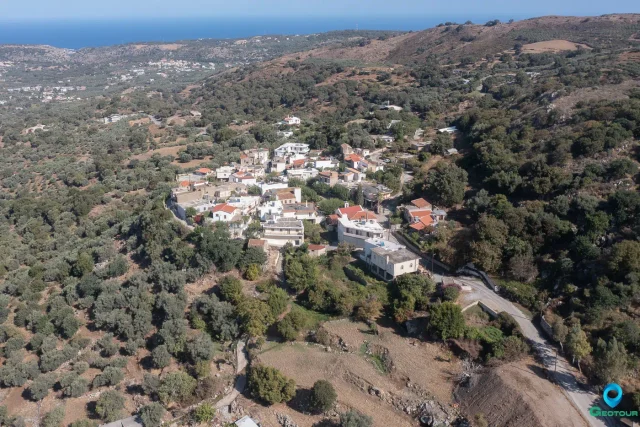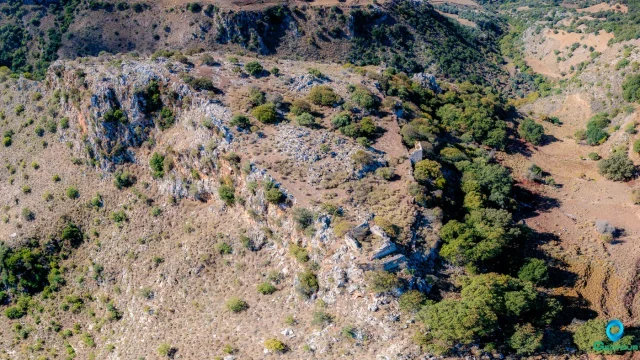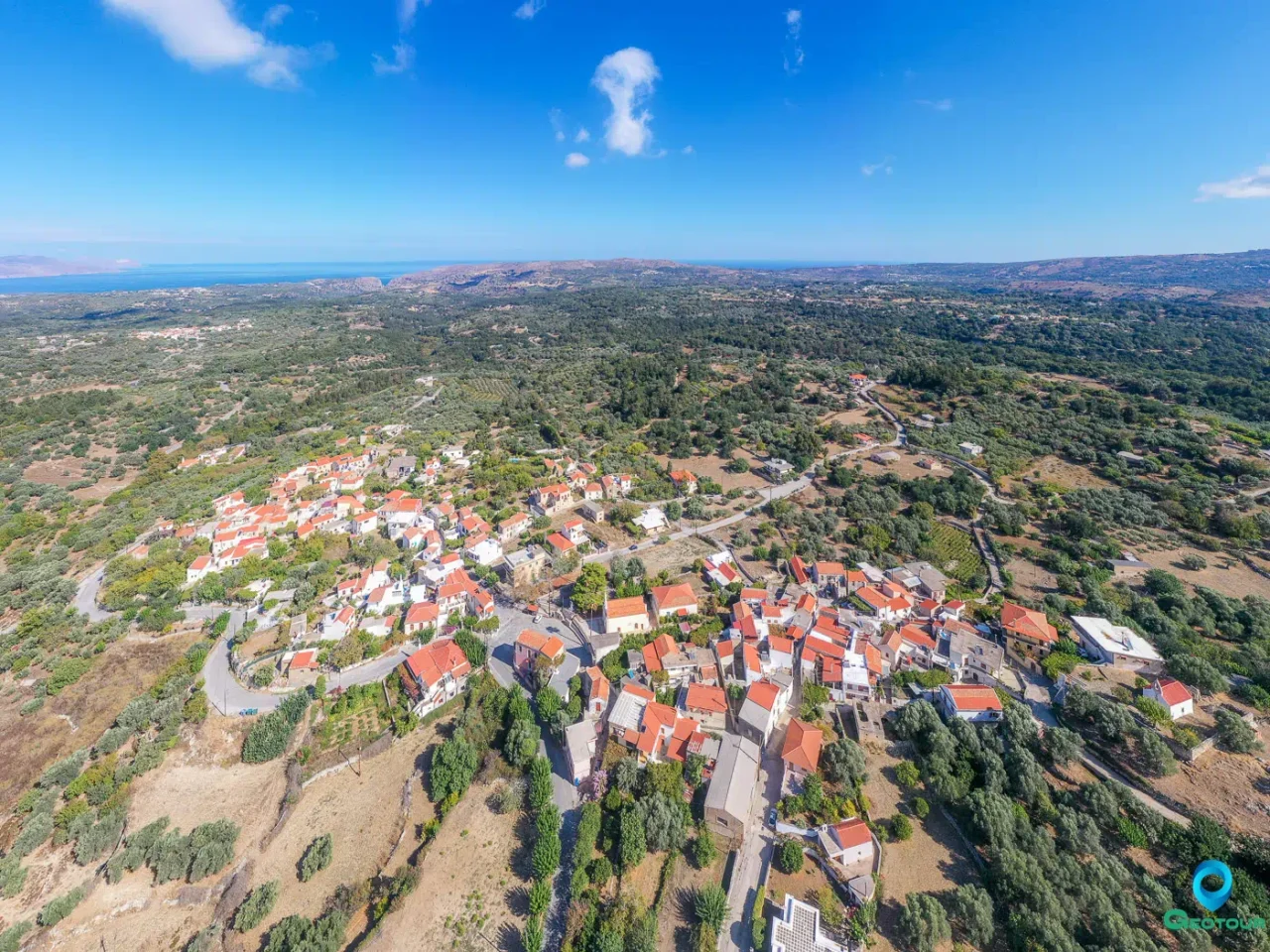
Roustika is a village located in the Municipality of Rethymno, within the Regional Unit of Rethymno in Crete, Greece. The village is recognized as a traditional settlement of medium cultural value (Category II), as per ΦΕΚΔ 728/1995. In 2005, it received an award as the “cleanest organized traditional settlement” from the Prefectural Committee for Tourism Promotion of Rethymno.
Geography and Name Origin
Roustika is situated 21 kilometers southwest of the city of Rethymno, at an altitude of 290 meters on the foothills of Ambelos hill. The village is built in an amphitheatrical layout and is characterized by abundant greenery.
Historical records indicate that Roustika existed before the Venetian occupation of Crete. The name is believed to derive from the Arabic word “Roustak” (Ρουστάκ), meaning village, which the Venetians subsequently adapted to Roustika. An alternative etymological theory suggests the name comes from the Latin word “rusticus,” meaning rural. Notably, a suburb in the outskirts of Rome also bears the name Roustika.
Historical Information
During the Venetian era, Roustika was part of the fiefdom belonging to the Barotsi family. The village has a history of its inhabitants being educated and making contributions in various fields of learning.
In 1935, Roustika functioned as a Gendarmerie sub-command for the Rethymno prefecture. This sub-command had jurisdiction over the Gendarmerie stations in Episkopi, Argyroupoli, and Asi Gonia.
Ecclesiastical Affiliation
The main parish church of Roustika is dedicated to the Koimisi tis Theotokou (Dormition of the Theotokos). Ecclesiastically, the village falls under the jurisdiction of the 5th Archiepiscopal District of the Holy Metropolis of Rethymno and Avlopotamos, which is part of the Church of Crete.
Attractions
Roustika offers several sites of historical and cultural interest:
Monastery of Prophet Elias Roustika
The Monastery of Profiti Ilia Roustikon (Prophet Elias Roustika) is located on a small, rocky hill at the southwestern edge of the village, surrounded by a verdant landscape. It is considered one of the most historic monasteries within the Holy Metropolis of Rethymno and Avlopotamos and is among the oldest in Crete, with its origins dating back to the Venetian period. The National Library in Paris holds a special section for old books originating from this monastery.
The monastery complex includes the Byzantine church of Profiti Ilia (Prophet Elias), Agia Triada (Holy Trinity), and Agia Zoni (Holy Belt), which is a three-aisled basilica with a cylindrical dome. A bell tower with two bells bears an inscription from 1637. The monastery served as a center for revolutionaries during the conflicts against the Ottoman Turks and was consequently destroyed by them in 1823. During World War II, the Historical Archive of Crete was safeguarded within the monastery.
Church of Panagia and Sotiros Christos
In the Livadi area of Roustika, there is a double-aisled church dedicated to Panagia (the Virgin Mary) and Sotiros Christos (Christ the Savior). The church is extensively decorated with frescoes that date back to its construction in 1381. The construction was funded by the family of Georgios Vlatas, who was a priest. The aisle dedicated to Panagia features vivid frescoes depicting scenes such as the punishments of the damned, equestrian saints, the betrayal of Christ, the preparation of the Cross, the Crucifixion, and the Deposition from the Cross. These frescoes are executed in an academic style and include a depiction of the church’s founder, Georgios Vlatas. The church also exhibits notable architectural details on its lintels and windows. The bell tower features the year 1627.
Anestis and Manolis Anagnostakis Spiritual – Cultural Center
The Anestis and Manolis Anagnostakis Spiritual – Cultural Center is housed in the former home of the Anagnostakis family. The building was donated to the community of Roustika by the poet Manolis Anagnostakis himself. The center exhibits collections related to his life and work. Entry is free, and inquiries can be made via telephone at 6977589932.
Other Museums
Roustika is also home to an Ecclesiastical Museum and a private museum showcasing traditional Greek costumes.
Battle of Roustika
The Battle of Roustika, also known as the Battle of Zouridi, was a military engagement during the Greek Revolution of 1821 in Crete. It took place on June 16 or 17 (some sources suggest July), 1821, in the vicinity of Roustika and resulted in a victory for the Greek revolutionaries.
The Greek forces consisted of Rethymnians and 500 Sfakians, led by figures including Papadopoulos, Anagnostis and Petros Manouselis, Georgios Deligiannakis, Kostopoulos, Georgios Sakorrafos from Agios Konstantinos, Ioannis Drouliskos with fighters from Atsipoulo (who prevented Turkish-Cretan reinforcements from Chania), and Manolis Roustikianos. They fought against Ottoman Turkish forces from Rethymno under the command of Glymid-Alis. The Ottoman objective was to attack the revolutionaries, initially in Roustika and Agios Konstantinos, and subsequently in Sfakia.
The battle, which also involved earlier engagements at Kato Valsamonero and Kalonykti before culminating at Zouridi, was a significant victory for the Greek uprising in the Rethymno region. Alongside the Battle of Agios Vasileios, it established Rethymno as a key center of the revolution in Crete. This battle followed the initial conflict of the Cretan revolt, which occurred at Loulos, Chania, on June 14, 1821. The Ottoman forces suffered seven casualties in this engagement.
Settlement: Key Points
- Location: 21 km southwest of Rethymno, Crete, at an altitude of 290m.
- Historical Name Origin: Believed to be from the Arabic “Roustak” (village) or Latin “rusticus” (rural).
- Venetian Period: Part of the Barotsi family fiefdom.
- Ottoman Period: Site of the important Battle of Roustika in 1821, a Greek victory; the Monastery of Prophet Elias was destroyed by Turks in 1823.
- Administrative Status: Traditional settlement of medium cultural value. Formerly seat of a municipal district, now part of the Municipality of Rethymno. Received award for “cleanest organized traditional settlement” in 2005.
- Key Landmarks: Monastery of Prophet Elias, Church of Panagia and Sotiros Christos, Anestis and Manolis Anagnostakis Cultural Center.
- Historical Significance: Center for revolutionaries during the Greek War of Independence; location of the Battle of Roustika.
- Population Data:
Year | Population | Notes |
1583 | ||
1881 | 441 | 439 Christians, 2 Muslims |
1900 | 550 | |
1920 | 491 | |
1928 | 514 | |
1940 | 546 | |
1951 | 441 | |
1961 | 354 | |
1971 | 261 | |
1981 | 251 | |
1991 | 233 | |
2001 | 261 | |
2011 | 150 | |
2021 | 118 |








